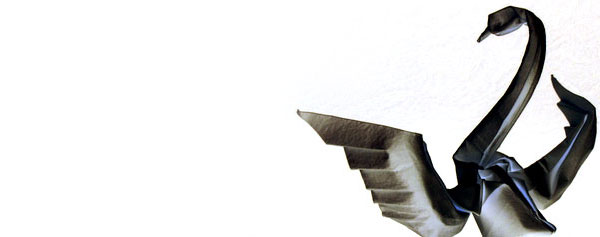Doomocracy: Darren Aronofsky and Psycho-Cinema
 1. Whatever is happening is actually happening and I am interpreting it correctly.
1. Whatever is happening is actually happening and I am interpreting it correctly.
2. Whatever is happening is actually happening and I am not interpreting it correctly.
3. Whatever is happening is not actually happening and I am interpreting it correctly.
4. Whatever is happening is not actually happening and I am not interpreting it correctly.
These are the four states of the schizophrenic mind. They are not exotic. Almost everyone should find them recognizable in themselves, but it is rare to have a collective experience of fractured perception: this is why we go to the movies. The Lumiere Brothers inaugurated the era of perceptual tourism in 1895. No (healthy) person suspects that their perceptive powers are compromised, so we, as a rule, default to condition one. The early history of film is the process of the first audiences learning that the special space of the darkened film theater was a space where, unlike the space of the street or even the live performance, the conventions of perception need not apply. In the intervening period, a train of filmmakers has dared to present increasing challenges to the perceptive powers of their audiences, but it has not been until now that an auteur has developed a truly schizophrenic direction. Darren Aronofsky is the only interesting American filmmaker of his generation, our generation; in an industry that seems only able to turn out Little Fockers, bristly, challenging, deep films are wholly alien. Aronofsky is either the last or the first of his kind, a scary genius.
I sat down to watch Pi expecting to see another overwrought indie that had made a stir at Sundance (in the era when Sundance still meant something) and would likely have the feel of a thesis project. I expected it to be safe and smart and theoretically unassailable; exactly the kind of film that an elite education would demand. From the first frame I looked hard and found exactly what I thought I would. I don’t mind looking at extremely high contrast images, or self-consciously jostled frames, but as I settled into my seat something else happened. The film covertly and then openly performs paranoia. I don’t mean that you identify with the paranoid main character; I didn’t anyway. The camera is paranoid. The filmic vocabulary is paranoid. Everything else is secondary to and occasionally in the service of producing a paranoid effect in an audience. It is the kind of film that makes you think the couple following you out of the theater wish you ill. You follow them home discretely (you think) in your car until they speed abruptly through a red light and you are left wondering. As such, it is a masterpiece.
I took this magical effect with me into Requiem for a Dream. At the time, I was thinking less about Hubert Selby Jr’s book and more about Maurice Blanchot, who I think must at least be relevant to Aronofsky. If literature begins at the question of literature, then surely the same is true of film. The parallels I could draw are easy and they seem to propagate themselves the longer I look, but I will stick with only one, the most obvious. Blanchot, more than other authors of his period and since, was primarily concerned with the performance of a piece of text. He focused explicitly on the conditions under which an audience might encounter an ordering of words, no easy task as direct prescriptions of how a viewer should view a work are almost always ignored or circumvented. Nonetheless, the conditions of the work contain their own prescriptions, and if you have read much of Blanchot, then you have found yourself alone in a room during daylight sitting upright in a chair or leaning over the words on a desk, and you must have realized that Blanchot intended this posture of sober contemplation for you. All other revelations within the text are premised on this essential control. From here, Blanchot can drive you into the pits of exasperation or the perils of self-contemplation. Reading Blanchot is about the same as being possessed from without.
I liked Requiem for a Dream because I like experiences that become canonical references. Everyone in my social circle knows what is meant when a reference is made to the film. I once found myself almost alone in an amusement park. There might have been a thousand visitors. The net consequence was that you could do whatever you wanted whenever you wanted, no lines, no strategizing, no impediments. One result was that no one lined up at the roller coasters and when no one lines up, the conductor offers to send you around the loop again, and again, and again. Most amusements are meant to overwhelm you with sensation for a specified period. When you can hit the big red button again, either your brain or the mechanism will fail. Ride twice back to back and the experience becomes commensurable, ride thrice and the interstices become definable, any more and the world starts to lose its gloss. Requiem for a Dream is exactly like this; the carnival of light and noise blurs and refocuses, the audience tests the boundaries of its seats, everyone leaves with a dull headache in a part of their brain they can’t specify.
In 21st century Hollywood, it is getting harder and harder to make films. After Requiem, Aronofsky was lured off into the industry. The biggest stars knew his name, the biggest franchises laid down at his feet. Every instinct was to make a big touch, maybe a summer blockbuster, maybe make the jump into the first tier of movie biz big shots. The Fountain was obliquely titled and sometimes impossibly pretentious. To watch it at all, you had to understand the films that preceded it; you had to know the cynicism built in to Aronofsky’s lens. You had to suspect that, like Blanchot, there were language games being played and the plot was just a skeleton on which to hang some finery. Almost no one saw it despite A-list star power (Hugh Jackman, Rachel Weisz) and multiplex distribution. You could almost see Aronofsky’s outstretched middle finger, a proof that the biz could not dominate a filmmaker as comfortable as Godard and as well versed in fuck you politics as Robert Evans. It was not a great film, but given its rocky path, it is interesting and may prove yet to be iconic. It certainly deserves more written about it than I can here.
The Wrestler was almost completely dominated by the media’s interest in Mickey Rourke. There are a number of ways you could interpret this event: Aronofsky had matured out of his egotism, Rourke had matured out of his plastic shallowness, character driven films naturally flatter actors over directors, 2008 was the year of the one personality film (The Dark Knight, Indiana Jones, Quantum of Solace, etc ad nauseum). I would prefer to think of it this way: The Wrestler is Aronofsky’s drag picture. Once they are comfortable, directors almost always choose a film against type. They try on the drag persona of a different kind of filmmaker. (The film is character driven; it boasts a conventional sports genre plot; it does not alienate as openly as it could.) With good directors, this drag film is meant to shake their audience and broaden their appeal. Often it is successful; for Aronofsky, it may have been too successful. Everyone forgot everything they knew about him. They stopped looking at the altered perceptions of the camera, its anxious flight, and its fetishishistic overemphasis on the details. The Ram is not the Ram but Robin Ramzinski, dressed in Robinson drag (think Jackie). Marisa Tomei plays an over-ripe drag queen who is no longer in control of the facts of an aging body. Everywhere you look there is a distance between the thing and itself. In some ways, it is Aronofsky’s most obvious description of the fractures that dominate his worldview. Perhaps for this reason, it was easier to talk about Rourke.
The same is not true of Black Swan. For the first time in his career, Aronofsky assumed an audience well-versed in his mode of film-making. From the first frame, it is clear that what is happening is usually not actually happening and the camera and the characters and, often, the audience (in the moment of perception) are not interpreting it correctly. It may be the first film ever to have treated an audience to a collective experience of mental illness without the safety of multiple proscenia, a reliable guide, or a narrative conceit. The closest Aronofsky ever comes to educating the uninitiated is the preponderance of fractured and faceted mirrors that lurk in his frames. Black Swan is close to flawless.
Of course, that means it is deeply flawed, fatally perhaps. Like most Aronofsky films, there is not much plot, the characters don’t have many characteristics (except for Mila Kunis who seems miscast as a result), and the camera is distracted at best. The reason that Natalie Portman will likely win an Oscar is that she conventionalizes the film, making up for its (conventional) failings. It is clear that she is acting, and it is reassuring. A lesser persona could have disappeared into the role, into the swirling mass of the film’s orchestration. Nonetheless, the tension between director and actress makes it impossible to look away. You want to look: touristically or voyeuristically or maybe clinically.
I will not analogize Black Swan. If you have ten dollars, I recommend you see it for yourself on a large screen with an auditorium full of people. Watch carefully; Aronofsky has gone subtle in this film, his last before being sucked up in the Superhero franchise machine. He has also gone scary; you get the sense that he knows he will not get this opportunity again. There are four states in a schizophrenic mind. The trouble is knowing which is which.







REALLY? Aronofsky the ONLY interesting American filmmaker of our generation? What about the Coen Brothers, PT Anderson, Wes Anderson, Wachowski Brothers, David Fincher, Gus Van Sant, Sofia Coppola, David Lynch, David Cronenberg, to name a few.
Yes, only. Coen Brothers born ’54 and ’57, Fincher: ’62, Van Sant: ’52, Lynch: ’46, Cronenberg: ’43! I guess it matters what you consider to be “our generation.” These are all well-respected names, but when you are as old as my parents, it is hard to make the argument. Additionally, all of the above were more interesting 10 years ago. Great fodder for a historian, but not the conversation we should be having. PT Anderson, while younger, can’t seem to maintain any momentum, either in his storytelling or in his career. Wes Anderson, while occasionally novel and often entertaining, can’t stand in the company you place him. The Wachowski Brothers: Ask a twenty year old if they have seen The Matrix, and learn about cultural relevance; ask about Speed Racer and maybe they don’t belong on your list either. Sophia Coppola, the most interesting youngster here, has yet to blossom. She shows great promise, but her films to date lack ambition. When she commands my attention, she will get it.
The Fountain sucked!